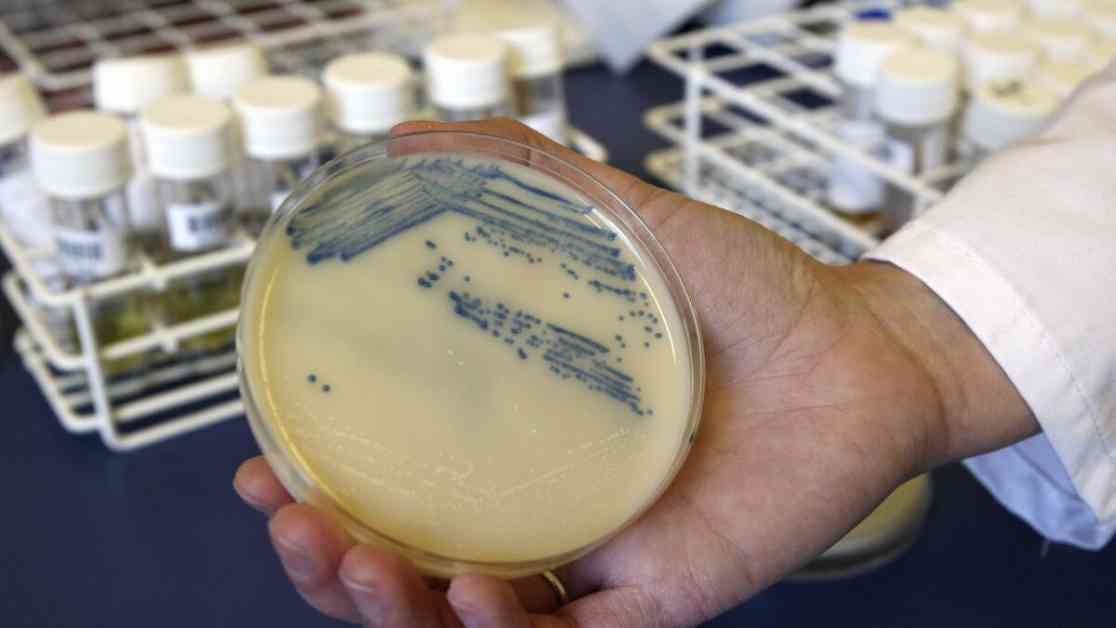Drug-resistant germs have been a growing concern since the dawn of the antibiotic age. These opportunistic pathogens have evolved defenses at a faster rate than humans can develop new drugs to combat them. Unfortunately, human actions have inadvertently given these bugs an advantage through the overuse of antibiotics. Pathogens that survive exposure to antibiotics can pass on their resistant traits, leading to a dangerous cycle of resistance.
A recent report has highlighted the potential devastating impact of drug-resistant infections in the future. According to the Global Research on Antimicrobial Resistance Project (GRAM), if officials do not take action to develop new medications, “superbug” infections could kill nearly 2 million people a year by 2050. This projection represents a 67.5% increase from the 1.14 million lives lost to drug-resistant infections in 2021. In addition, an estimated 8.22 million people will die of causes related to these infections in 2050.
The GRAM report, published in the medical journal Lancet, is a joint project of the University of Oxford and the University of Washington School of Medicine’s Institute for Health Metrics and Evaluation. It is considered the most comprehensive assessment of the risk of antimicrobial resistance (AMR) to date. The World Health Organization has long recognized AMR as one of the top 10 threats to global public health.
The alarming statistics presented in the report have raised concerns among experts and health officials. Henry Skinner, chief executive of the AMR Action Fund, a public-private partnership that invests in new antibiotic development, described the numbers as “staggering and unacceptable.” Skinner emphasized the need for governments to fulfill their moral obligations to protect and care for their people to prevent millions of needless deaths.
The report predicts that roughly two-thirds of AMR deaths in 2050 will occur among individuals aged 70 years or older. Older adults are already at a higher risk for drug-resistant infections, particularly those acquired in healthcare settings. Between 1990 and 2021, deaths due to AMR increased by more than 80% among people aged 70 and older.
According to the report, the mortality rate from resistant pathogens is projected to be highest in regions such as South Asia, Latin America, and the Caribbean. These areas face unique challenges in combating drug-resistant infections, highlighting the urgent need for global cooperation and coordinated efforts to address the growing threat.
One of the major obstacles in combating AMR is the slow pace of new antibiotic development. Unlike drugs for chronic conditions, antibiotics are not meant to be taken over the long term. The most potent antibiotics should be used sparingly to minimize opportunities for bacteria to develop resistance. However, the financial incentives for producing new antibiotics are not as lucrative as for other medications, leading to a lack of investment in this critical area.
The World Health Organization has warned that the current global development pipeline for new antibiotics is insufficient to tackle the rise of drug-resistant pathogens. Of the 32 antibiotics under development against priority bacterial pathogens identified by the WHO, only 12 take nontraditional approaches. This innovative approach is crucial for combating resistance effectively. Additionally, only four of the antibiotics under development target pathogens classified as the most critical threat to public health.
Despite the grim outlook presented in the GRAM report, the authors emphasize that the situation is not inevitable. Progress in vaccine distribution, access to clean water, and sanitation has already contributed to a significant reduction in AMR-related deaths among children under 5 years old. This success demonstrates that with concerted efforts and targeted interventions, it is possible to mitigate the impact of drug-resistant infections.
The report underscores the importance of implementing better infection control measures and accelerating drug development to address the AMR crisis. According to the authors, up to 92 million lives could be saved between 2025 and 2050 if proactive steps are taken to improve stewardship practices, enhance access to antibiotics in low- and middle-income countries, and increase investments in antibiotic research and development.
James Anderson, chair of the AMR Industry Alliance, emphasized the potential for saving tens of millions of lives through coordinated action and strategic investments. The data presented in the report highlights the urgent need for collaborative efforts at the global level to address the growing threat of drug-resistant infections and safeguard public health for future generations.
Overall, the findings of the GRAM report serve as a stark reminder of the urgent need to address antimicrobial resistance and develop effective strategies to combat drug-resistant pathogens. By taking decisive action now, we can prevent millions of needless deaths and ensure a healthier future for all.



























